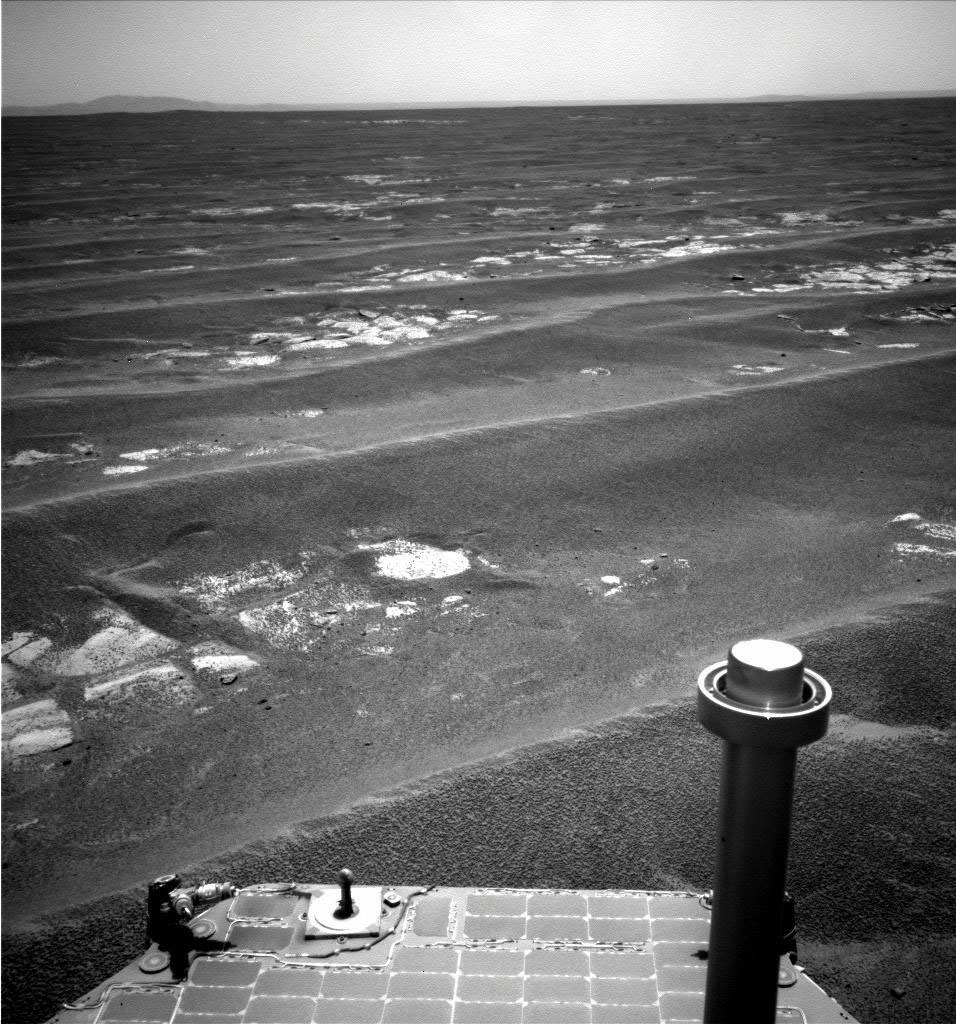 | |
|  |
|
|
| |
| The 787, Opportunity's Endeavour, & space DNA | Aug 09, 2011 12:07 AM PDT | url |
| | |
Added 1 new A* page:A friend linked me to this pretty cool photo of the Space Shuttle Atlantis lit up on the launch pad and reflected in a puddle on the tarmac. It's hosted by Boeing, who still have some major facilities around my home city of Seattle, and in fact I noticed in an article earlier today that one of them just hosted the unveiling of the first 787 Dreamliner, the company's big new passenger aircraft; the first one is going to All Nippon Airways, a Japanese airline.
~~~~~~~~
I also noticed a new AP article about the Mars Opportunity rover nearing the large crater Endeavour (hey there's another Space Shuttle connection, at least in name); Endeavour is "a 14-mile-wide depression near the Martian equator," and should hold older layers of Martian soil and rock than Opportunity has found in the three previous craters it has explored, which were much smaller. Opportunity should reach the edge of the crater tomorrow; that will be the end of a seven-mile drive that has taken the rover two years! Now that's dedication; and keep in mind that Opportunity and its twin rover, Spirit--which got stuck in soft soil two years ago, but continued to transmit until last year when contact was lost--were originally planned to be just a three-month mission. And although Opportunity is expected to make the Endeavour crater its final stop, mission team members are optimistic that the rover will be able to conduct several years of exploration within its vast confines.
Here's a nifty photo Opportunity took recently--I like the look of this vast expanse of rippled Martian sand:

image by NASA (source)
~~~~~~~~~
And as if that wasn't enough to absorb in one day, a NASA-funded study just concluded that meteorites likely carried some of the building blocks needed for DNA to the Earth: after looking at meteorite and soil and ice samples from Australia and Antarctica, the study found that three nucleobases--which are building blocks of DNA and RNA, and thus all life as we know it--were present in the meteorites, but not in the terrestrial material around them; indeed, these particular nucleobases "are rare or absent in terrestrial biology." So the theory is that if *those* nucleobases could come here in meteorites, the ones inside plants and dogs and cats and humans and so forth could have come from space as well.
This NASA article has more about it; for instance: "The discovery adds to a growing body of evidence that the chemistry inside asteroids and comets is capable of making building blocks of essential biological molecules. For example, previously, these scientists at the Goddard Astrobiology Analytical Laboratory have found amino acids in samples of comet Wild 2 from NASA’s Stardust mission, and in various carbon-rich meteorites."
Interesting!
|
·····
|
|
|
